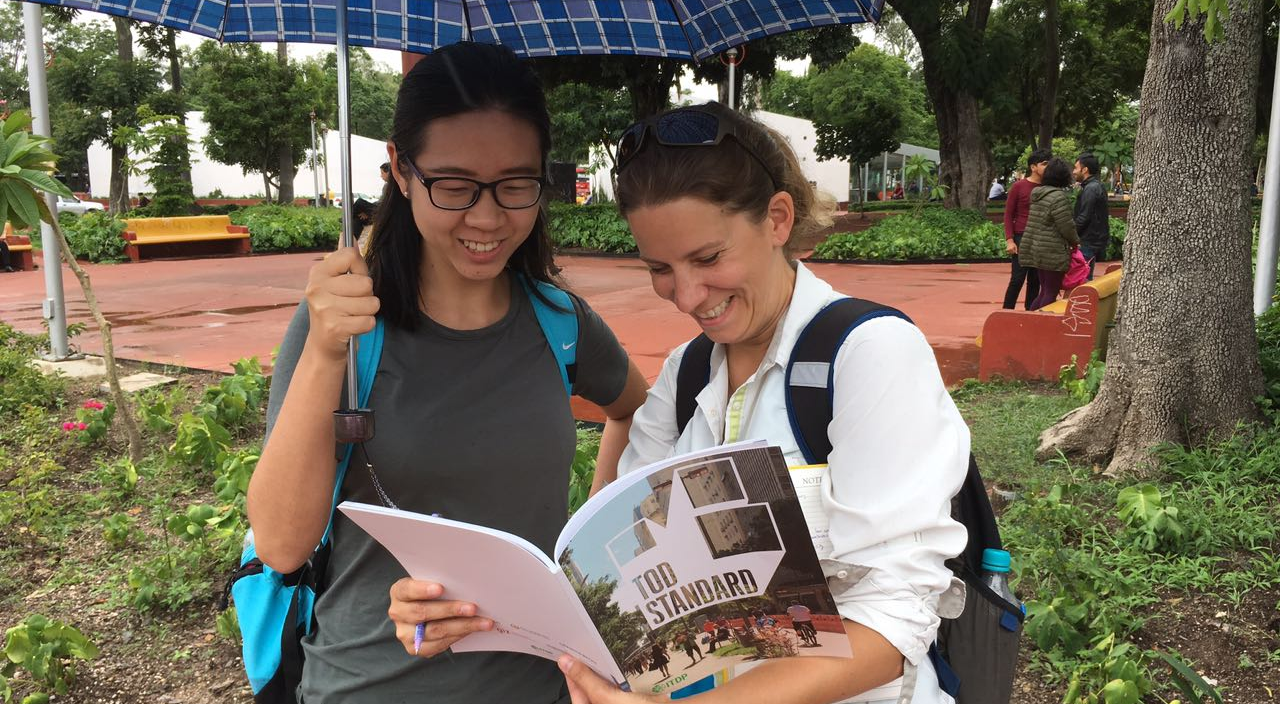
by Onésimo Flores Dewey and Santiago Fernández Reyes
The Mexican City of Guadalajara has built subway lines before, but the line currently under construction is significantly different. This time, the city has a strategy to leverage investments in transit to repopulate the city’s core and promote multimodality. The new subway runs underground Avenida Alcalde, a historic but deteriorated 6 lane avenue used by more than 100,000 car commuters everyday. With the avenue closed due to construction of the subway, this car traffic largely evaporated. People started using alternative routes, or changed their transportation habits. Mayor Enrique Alfaro decided to make this change permanent. His administration is transforming the three kilometer section of Avenida Alcalde into a lovely, traffic calmed area, full of fountains, sculptures and world class urban design. In addition, the city has approved a new land use plan, which largely frees property owners to build thousands of new housing units alongside the subway stations of Avenida Alcalde. Guadalajara may become the most interesting experiment in TOD in Latin America.
But will the real estate market react positively to this opportunity? Will new development blend in or disrupt the existing neighborhoods character? Will changes in urban design truly entice people to ditch their cars? MIT’s instructors Brent Ryan, Onésimo Flores Dewey, and Chris Zegras with a group of students from various backgrounds including civil engineering, architecture, urban design, and business administration, worked through a semester-long course to identify strategies to create sustainable mixed-use communities around mass transit stations in Guadalajara.
The team traveled to Guadalajara during August 2017, where they carried out site visits and met with government officials, real estate developers, community activists and neighbors. They reviewed existing plans, and evaluated the potential for the new transit investments in the area. The group used ITDP’s TOD Standard to evaluate station-areas and to propose changes that could influence more sustainable and socially equitable urban development outcomes.
One of the strategies identified was to capitalize the potential for TOD along Guadalajara’s upcoming Line 3 of the light rail, which is expected to be inaugurated in 2018. Two station areas were closely examined, Santuario and La Normal, which are located in the historic center of the city. The new light rail line will improve transit accessibility to this area of the city greatly, and is a good opportunity to make these neighborhoods efficient, economically vibrant, and livable. (MIT DUSP, 2016)

The final report presented to the city officials: “TOD in Guadalajara: An Approach to Urban Transformation” details plans to turn Santuario and La Normal neighborhoods into mixed-use zones. Policies to support this vision, include updating zoning plans to facilitate denser mixed-use development, policies to manage travel demand, strategies for land acquisition and assembly, encouraging participation, and upgrading the streetscape and public spaces to encourage walking and cycling.
The two stations correspond to different typologies, and therefore should be planned according to different strategies. La Normal is characterized by opportunity for greater densification due to high number of publicly owned large parcels. These parcels have a potential to accommodate more units of affordable housing. Santuario, on the other hand has a potential for infill as it is an already dense neighborhood. Once improved through pedestrian and mixed use interventions, it could serve as a gateway for the new historic center where the city is already remarkably walkable, mixed and with high quality public spaces. Importantly, because Santuario is characterized by a more built-out urban fabric, specific no-displacement measures are recommended to protect pre-existing tenants such as proper compensation for both formal and informal business owners. Both station areas, while distinct, could be models for TOD that fit Guadalajara’s particular context.
It is rare to find transportation investments and land use planning truly linked in Latin America. More often than not, cities build gated high-rise districts with no transit access, or transit lines where few people live. However, the collaboration between different stakeholders, including academia, government authorities and civil society, could be powerful to advance more sustainable development policies. Time will tell, but Guadalajara seems on track to getting TOD right.
 Download The TOD Standard here and visit todstandard.org for more information. You can also read more insights from other authors of The TOD Standard here, here, and here.
Download The TOD Standard here and visit todstandard.org for more information. You can also read more insights from other authors of The TOD Standard here, here, and here.




